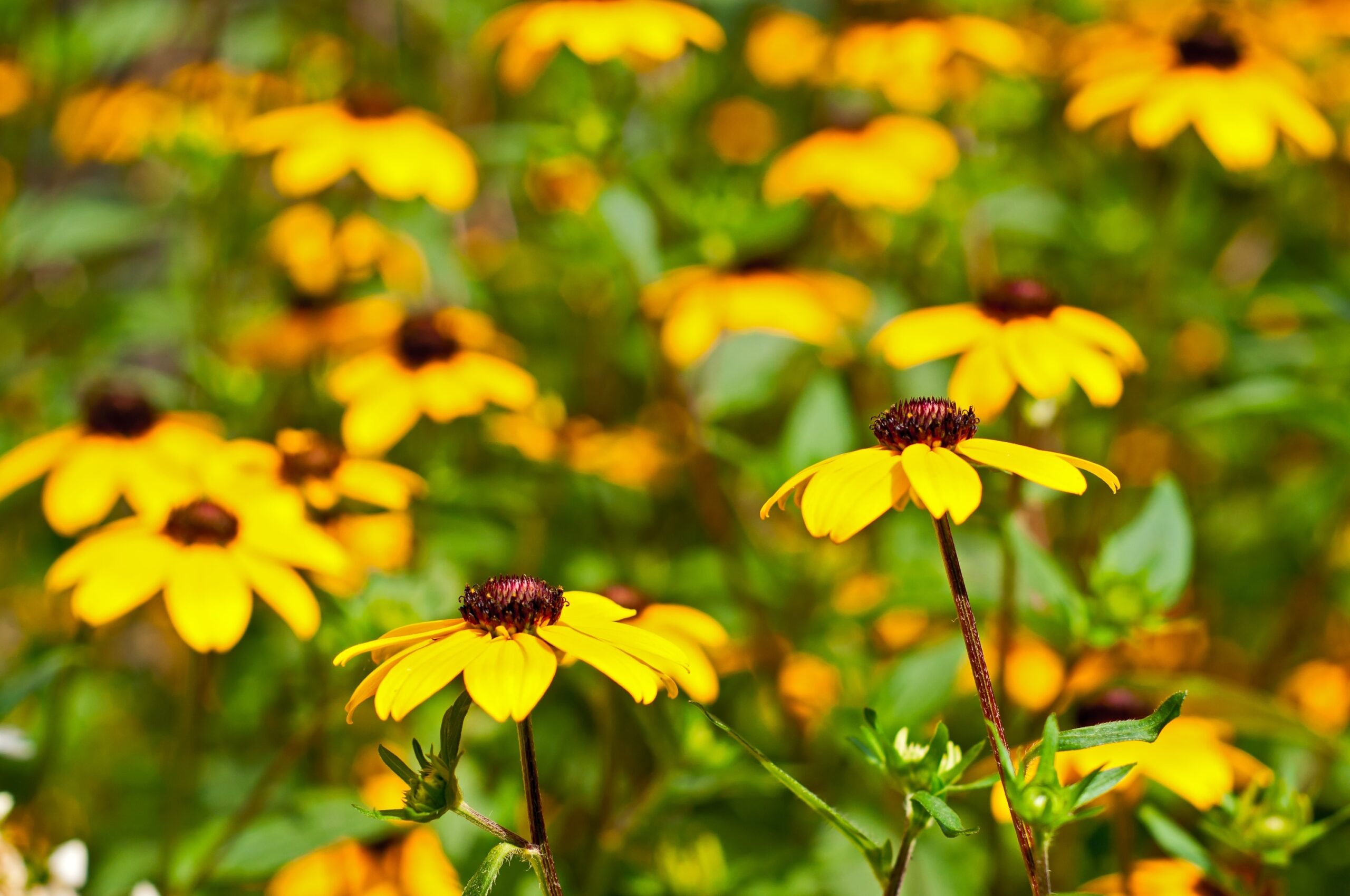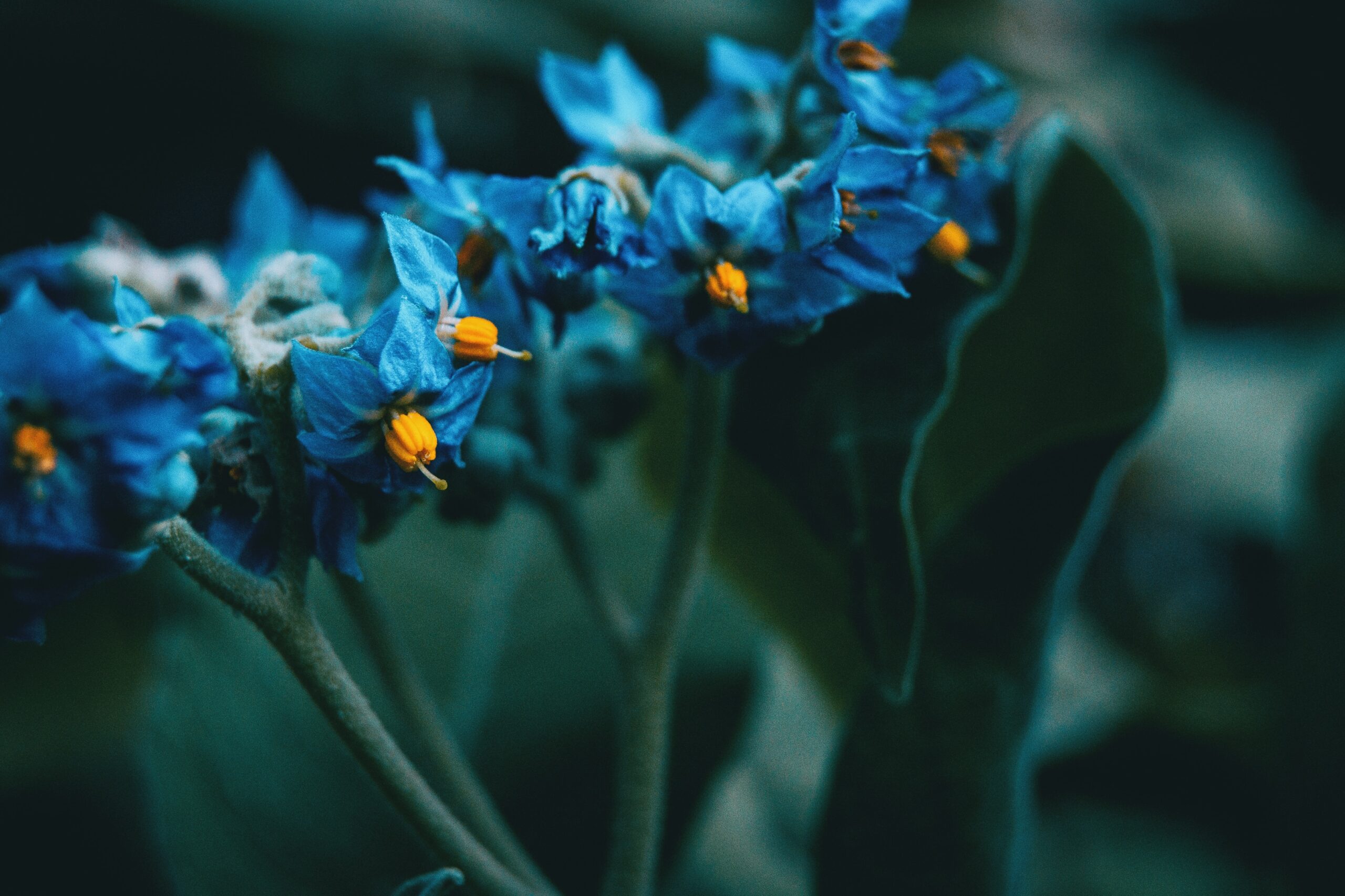Driving through Kansas can provide a fantastic feast for your eyes when Kansas native flowers are in bloom. You will enjoy the raw beauty of wild native flowers dancing in the fields with vivid flashing hues. Kansas offers many native flowering plants, trees, and grasses waiting for a passerby to explore. So, if you travel through Kansas, take some time to stop and stretch your legs to see the beautiful gifts Mother Nature provides. However, if you live in Kansas, you are fortunate because you get to enjoy the wildflowers all over the place, all the time.
Wind, water, and pollinators are responsible for spreading the seeds of native trees and wildflowers in the Kansas prairies. Kansas native plants are suited to the particular temperature and soil conditions in which they grow. These vital plant species offer nectar, pollen, and seeds that feed native butterflies, insects, birds, and other creatures. Common horticultural plants, unlike indigenous, do not give energy incentives for their visitors and frequently require insect pest management to live. Keep reading for more benefits of Kansas native plants landscaping and our favorite native plants and flowers here in the Midwest.
Benefits of Kansas Native Flowers
Native flora is also beneficial because:
- Native plants don’t need fertilizer and use fewer chemicals than lawns.
- Native plants use less water than lawns and aid in erosion prevention.
- Many native Midwestern plants have deep root systems that improve the soil’s capacity to hold water. As a result, native plants can significantly reduce water runoff from flooding.
- Native plants aid in the reduction of air pollution.
- Native landscapes do not require mowing.
- Excess carbon emitted by the combustion of fossil fuels contributes to global warming, and native plants absorb carbon from the atmosphere.
- Native plants offer animals both shelter and food.
- Native plants encourage biodiversity and environmental responsibility.
- Native flora are attractive and add to the aesthetic value of the area!

Native Plants of Kansas Sorted by Color
Wildflowers bloom in a kaleidoscope of brilliant colors during the year’s warmer months, from spring to fall. It’s a veritable rainbow:
Yellow Kansas Native Flowers:
If you love yellow, you are probably familiar with the beautiful Kansas native blooms such as Black-Eyed Susan (Rudbeckia hirta), Bladderpod (Peritoma arborea), Buttercup (Ranunculus bulbosus), Rigid Goldenrod (Solidago rigida), Gumweed (Grindelia squarrosa), Plains Coreopsis (Coreopsis tinctoria), Primrose (Primula vulgaris), and Downy Sunflowers (Helianthus mollis). You can spot these lovely blooms popping their heads up in fields across the state of Kansas.

Orange, Pink, and Red Kansas Native Flowers:
If your choice of color leans toward the bright hues of orange, pink, and red, you may favor Blanket Flower (Gaillardia), Buffalo Gourd (Cucurbita foetidissima), Broad-leaved Purple Coneflower (Echinacea purpurea), Hollyhock (Alcea rosea), Indian Paintbrush (Castilleja coccinea), Prairie Wild Rose (Rosa arkansana), and Trumpet Vine (Campsis radicans).

Blue, Lavender, Lilac, and Purple Kansas Native Flowers
Likewise, if you prefer shades of blue, lavender, lilac, and purple, your choice of natives may include Chicory (Cichorium intybus), Downy Gentian (Gentiana puberulenta), Dwarf Larkspur (Delphinium tricorne), and Nightshade (Solanaceae).

White and Ivory Kansas Native Flowers:
For people that love the clean and romantic look of white or ivory natives, Bloodroot (Sanguinaria canadensis), Daisies (Bellis perennis), Duck Potato (Sagittaria latifolia), Flowering dogwood (Cornus Florida), Jimsonweed (Datura stramonium), or Robin’s Plantain (Erigeron pulchellus), are beautiful examples of Kansas native and wild blooms.

Native Plant Gardens in Kansas
If you are ready to start your garden or introduce native blooms to your existing garden but are unsure what you want to include, consider visiting a natural garden in Kansas to experience the various native wildflowers. Below are a few of the beautiful botanical gardens you may want to visit:
- Sim Park in Wichita – Boasts 18 beautiful acres of native flowers, including 4,000 types of flowers.
- The Chaplin Nature Center – Includes 230 acres that are along the Arkansas River. The nature center includes prairies, beaches, and forest areas.
- Dillon Nature Center – The conservatory has 100 acres, including 200 plus types of flowers and plants.
We suggest you bring a notebook to document your favorites to include in your native oasis.

Native Plants of Kansas
Grass, mosses, rushes, sedges, shrubs, sedges, trees, and vines are just a few of the plants and wildflowers native to Kansas soils. These plants are abundant in gardens, woods, marshes, and prairies. In Kansas, the number of vascular plants is over 2,000. Vascular means they have leaves, stems, and roots. Vascular plants carry water and nutrients and reproduce through seedlings. Some vascular plants self-pollinate, whereas insects and wind pollinate others. In addition, Kansas includes one conifer species and around 200 bryophytes, or non-flowering plants that reproduce by spores. Bryophytes include things like moss, hornwort, and liverwort. There are also over 40 different fern species.
Planting In Kansas
Wildflowers abound throughout Kansas prairies and fields, adding color and fragrance to the landscape. For residents of Kansas, you already know that the state is blessed to have such a large number of native plants and blooms. If you plan to plant in the early fall, September is perfect for planting Alfalfa (Lucerne), and Downy Sunflowers (Helianthus mollis). You may also consider Broad-leaved Purple Coneflower (Echinacea purpurea), Partridge Pea (Chamaecrista fasciculata), Plains Coreopsis (Coreopsis tinctoria), or Purple Prairie Clover (Dalea purpurea). No matter what flowers you choose, we encourage everyone to consider native varieties.
Native Pollinators in Kansas
Pollinators are nearly as vital as the light, soil, and water in the reproduction of blooming plants and the production of most fruits and vegetables. According to the United States Department of Agriculture, pollinators are responsible for approximately 80% of blooming plants and over three-quarters of the crops that feed people. Ants, bees, beetles, birds, butterflies, flies, hummingbirds, and moths are pollinators. However, the number of these essential organisms is declining due to several reasons:
- habitat loss
- the introduction and spread of exotic plant species
- pesticide abuse
- illness
Therefore, the most important action we can do to help these species is to create a wildflower-rich habitat.

How Down to Earth Services Can Help
Creating a wildflower-rich habitat may seem overwhelming. However, with the wide variety of Kansas native flowers and plants, creating this type of habitat in your landscaping and garden is regenerative and beautiful. In addition, it leads to less work on your part. Down to Earth Services are the native plant specialists of Kansas and Missouri. We are here to help install, design, and manage your native plant garden. The first step is to give us a call. Then, visit our nursery right here in Kansas City to see all the beautiful Kansas native flowers available. We can’t wait to help you create a sustainable landscape right in your backyard.

